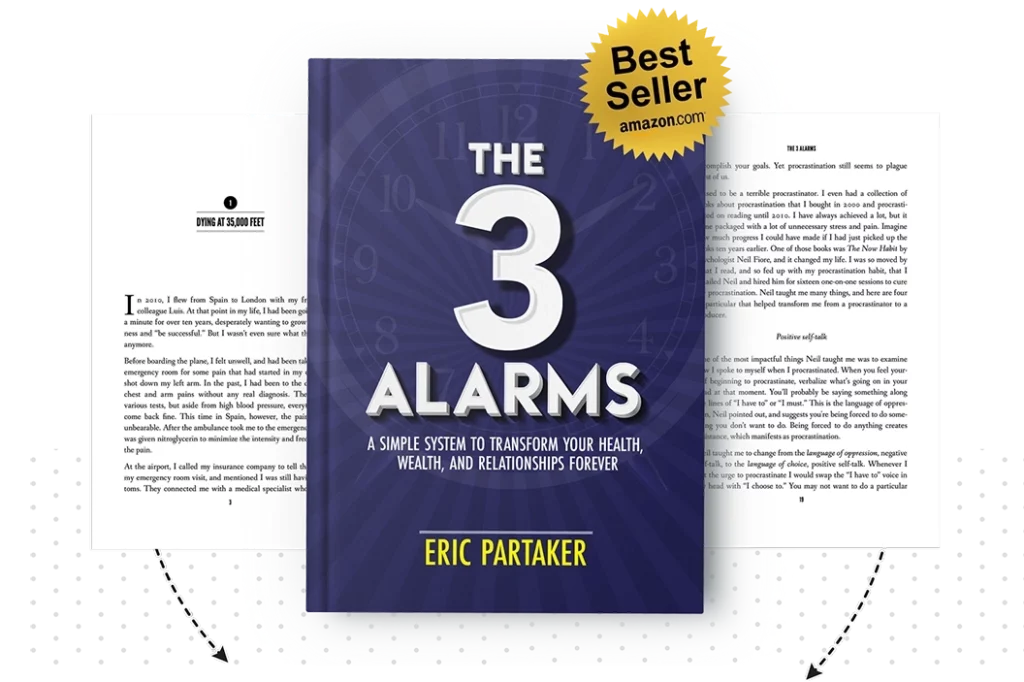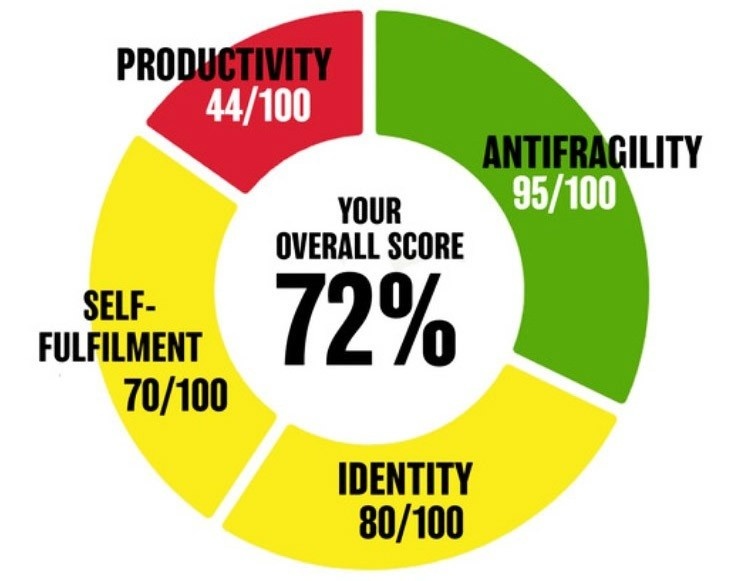SUMMARY
- If you’re anything like me, you’ve experienced conflict at work with colleagues or employees and at home with your family and friends. But shying away from dealing with it won’t resolve it. Unless you really step into and embrace conflict, you will never reach your full potential, and those working with you won’t either.
- We need to constantly be mining for conflict. That means that when we’re in a meeting or conversation with others and we sense a point of disagreement, we step in as a manager or a leader to deal with the problem immediately.
- Get into the habit of encouraging healthy debate. People are going to have different points of view, but it’s by tapping into those perspectives that we can arrive at better solutions by uncovering things we weren’t aware of.
- When we encourage people to express their points of view, even if the decision at the end isn’t congruent with what they had hoped for, they’re more likely to buy in to whatever it was because they’ve had their say.
- Another key habit is to create space. Once you’ve identified what triggers you, think about how the best version of you would respond, and then create space between stimulus and response to better access that optimal response pattern.
TRANSCRIPT
Have you ever experienced a lot of conflict? Perhaps at work with fellow colleagues, or maybe even within your team. Or a conflict at home with your family, or maybe with friends. Now, you may be shying away from dealing with that conflict, but the truth is unless you learn how to step into that discomfort and act a bit more courageously, have the difficult conversations if you need to. Unless you really step into and embrace conflict, you will never reach your full potential, and those working with you will never reach their full potential either.
Hi, I’m Eric Partaker. Today I want to tell you about how I struggled with conflict and with the resolution of conflict. My journey to discovering a way through all of that, and then leaving you with some super practical tips that you can use to help resolve any conflict that you have both in business and life.
Now, when I started off in my business career, one of the things that I always shied away from was any type of conflict. For example, I had a lot of difficulty standing up for what I thought. If somebody was quite confrontational with me, I might just back off and give in to whatever it was that they were asking. If I sensed conflict between others and observed it, I might want to kind of shift the conversation to something else or suggest that we just move on rather than go more deeply into it. If I knew conflict was perhaps on the horizon, I might choose a different path to avoid that conflict.
Think about all of that for a moment. If you’re constantly backing down, if you’re constantly trying to move team members on if they’re having conflicts so that they don’t deal with it, if you’re constantly choosing a path that is easier and is full of less conflict, do you think that’s going to deliver a great result for you in life?
Well, I came to the realization that it wasn’t going to do that for me. So I started to read a lot about conflict resolution. I started to talk to experts who knew how to handle conflict and knew how to get the most out of it. To figure out how to actually benefit from this instead of running away from it. How can I actually look for conflict, step into it and actually grow from it? I want to share with you a few different ways that I’ve done this and some stories around that as well.
I’ll actually start with a story. I remember a couple of team members in one of the companies that I’ve built were having a massive conflict that quite a lot of people were aware of, which was becoming a bit of a soap opera.
It just got to that point where it was like, enough is enough. We have to deal with this because they’re not dealing with it themselves. This was in the early days, I didn’t have all the tools that I have now, but it still actually worked, I handled it by grabbing the two of them. We went to the local pub, and of course they were very, very uncomfortable wondering why it was that just the three of us together. And as we sat down at this local pub, I looked at the two of them. I said, “This is going to be a great conversation because each of you is going to put everything on the table for what’s really bugging you and pissing you off. We’re going to talk about it out in the open. And what’s great about this conversation is that when we leave this table, we’re going to know what we’re all going to be doing to better handle and manage this conflict going forward.”
“I think we’d all agree that we need to be working better together as a team, because that’s what teams are about rather than having deep seeded conflicts between us. Isn’t that right?” And of course, I got a bit of shock that they were going to be forced to kind of just put things on the table. Ultimately it is their decision. But also, I think there was a sense of relief too. I could sense that we were going to get through this. It might be painful, but we were going to get through it. Now, I would have approached that conversation a little bit differently nowadays but there are some things that I still would do these days.
I want to share with you a few pointers for how you can get better at resolving conflict in both your business in life.
The first thing is that we need to constantly be mining for conflict. Think of it as if you’re digging for it. What I mean by that is that when we’re in a meeting with others or maybe in a conversation with others, we might sense that, “Ah, there’s a point of contention here. It seems like there’s a bit of disagreement here, or we might not even be sure.” It’s very easy to let that moment go by. It’s very easy to just step away from that and move on to the next thing. That is precisely your moment as a manager or a leader in your business, or just in your life.
You’re a leader, for example, in your family. Any parent out there is a leader in your family, any child out there has a leadership position in the role that they fill within their family. You have a responsibility to step in in that moment. So for example, if two people are disagreeing, you might say, Jen and Henry are having a conversation. You sense that Henry says in response to Jen, “I’m not a hundred percent sure about that.” Then Jen is rapidly moving on with the conversation. That’s your moment to step in and say, “Hang on there, Henry, can you elaborate on that? It sounds like you’re not in complete agreement there, what’s your point of view?”
You have to mine for that conflict. If you don’t, then things reach the boiling point, where I had to have that conversation at the pub that I referenced earlier. So you have to constantly mine for conflict and bring it to the surface. This is one of the most important things you can do to prevent things from going too far. To prevent resentment from developing and growing within people.
The second thing that we can do – it relates to mining for conflict – is to get into that habit of encouraging healthy debate. In that example that I was using with Jen and Henry, we’ve asked Henry to state his ideas and views on a particular subject, and now let’s encourage some debate.
“So, Jen, what do you think about that? Let’s consider all points of view. Does anybody else in the team have a point of view on this?” Benefit from making the conflict productive so that you can really benefit from everyone’s point of view. You can’t reasonably expect a room of smart people to not get into conflict. They’re going to have different points of view, but it’s by tapping into those different points of view, through healthy debate that we can often arrive at even better solutions by uncovering perhaps something we weren’t aware of. Here’s the other thing too, that I learned from Patrick Lencioni in his book, Five Dysfunctions of a Team – when we encourage people to express their points of view, even if the decision at the end isn’t congruent with what they had hoped for, they’re more likely to buy in to whatever it was because they had the chance to weigh and they had the chance to express their points of view or beliefs about whatever the subject was that you’re discussing.
So, we have that first point – mine for conflict. We have the follow on from that, which is to encourage healthy debate. However, we will still always get into these situations where we step in, where we need to step in. Perhaps we didn’t mine for conflict quickly enough, we didn’t encourage the healthy debate and deep seeded resentment begins to build, or people just get really entrenched in their positions. They don’t want to budge. That’s where sometimes we need to facilitate, we need to step in to prevent things from boiling over completely. One of the things that I like to do, and I’ll give you a series of tips in a conversation like this that you might need to facilitate. The first is just ask, what’s going on here?
Let’s really understand what the things are that are bugging us, but we don’t want to spend too much time on the past. We want to transition fairly quickly from that to, how would you like to be treated? And get a future orientation and thinking, “How would you like things to have been handled if this was done again? How would you prefer that this situation unfolded, if you experienced it again or if we could go back in time? What we’re trying to ultimately do with understanding what’s going on and understanding how they would like to be treated, is this next point.
I’m trying to understand, “Well, what are the trigger points? What are the things that are contributing to this conflict?” If we understand what’s currently going on and how they would like to be treated, we get a better sense of what those trigger points can be.
Then the next thing that you can ask people to do, is once the trigger points are identified, ask them, “How would the best version of you – not the current version – how would the very best version of you respond to each of those situations?” We always had the freedom to choose how we’d like to respond. Sometimes, we need to remind others and get them to think. There’s going to be a version of them that will respond in the very best way, and then there’ll be everything else. We really want to get them to connect to that version of themselves and understand how that version would respond differently.
The other thing that we can teach people to do is to create space. So once they’ve identified what it is that triggers them, how the best version of them would respond, they just need to create a tiny bit of space between stimulus and response, so that they can better access and choose that optimal response pattern that you’ve just had them identify. They can create space by just getting into the habit of taking a pause, walking away from a conversation, going for a walk so that they can better access that optimal response pattern.
I hope you enjoyed this piece on resolving conflict. I hope you get better at stepping into conflict because the more you do that, the more you get better at resolving it and not being afraid of it, the farther and further you will propel yourself in life, and the farther and further you will help your teams and help them propel themselves in both business and life.




